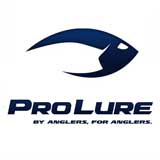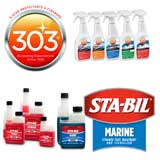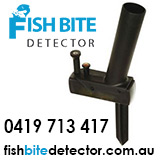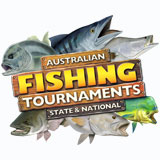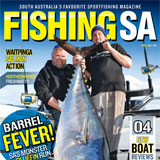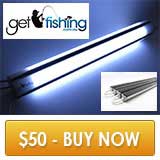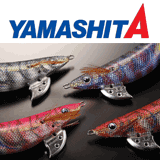Species ID
View AllRed Emperor
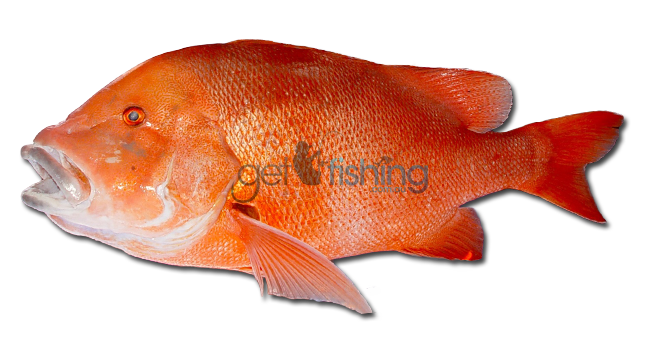
Red emperor are a red, deep bodied fish with a strong, forked caudal fin and continuous dorsal fin. They are an offshore demersal reef fish and are in fact not a true emperor. They are actually a member of the Snappers and Seaperches family Lutjanidae, and are more closely related to Mangrove jack and Red bass than any of the emperor species. Juveniles and young adults are distinguished from more mature fish by three dark red vertical bands and a paler overall colouration. As they age they become pink/red all over and the banding becomes less distinct.
Other names
Emperor Red Snapper, Government Bream, King Snapper, Red Kelp, Queenfish
Common size
65-70cm
Related species
Mangrove jack, Red bass, Spanish flag, Fingermark bream, Golden snapper.
Lifespan
At least 34 years
Habitat
Red emperor generally inhabit water depths between 10m to 140m. Juvenile fish inhabit inshore reef systems, structure and gravel patches while mature adults inhabit deeper offshore waters with a preference for coral reefs and adjacent sand areas, deep isolated reef and coral structures, small rises and rubbly gravelly bottom. They tend to form schools of similar size fish.
Reproduction
Little is known about the reproductive habits of Red emperor. What is known is that they mature at roughly 50cm and three to four years of age. They grow to over a meter in length and 33kg in weight.
Diet
Red emperor are carnivorous and feed on crustaceans, molluscs and fish within the reef system including squid, octopus, crabs, shellfish, shrimp and small fish.
Pound for pound
Red emperor prove to be a tough opponent when it comes to reef fish and it’s not uncommon to be taken to the cleaners when fishing light tackle. They are a tough fighter, will run hard and bust off on the reefy bottom given the chance. The sheer size of mature fish matched with their powerful head shaking and ability to fight from the bottom to the surface make them a formidable opponent.
Catch care
Most reds are targeted as a food fish and immediate bleeding and placing in a salty ice slurry will enhance the flesh. It is generally regarded as one of the best eating fish in the ocean so if you’re going to take one for a feed look after it properly. Reds rarely suffer any form of barotrauma so release very well.
Information courtesy of David Fox, Redcliffe QLD, Department of Fisheries WA, DAFF QLD and DPIF NT. Photos courtesy of David Fox.
Where to fish
Red emperor inhabit marine waters generally between the depths of 10-140m. Juveniles are typically found in shallower nearshore and offshore waters while mature adults tend to inhabit deeper offshore rocky and coral reefs and adjacent sand areas. When targeting mature fish look for deeper isolated reef and coral structures, small rises and rubble bottom.
How to target
When targeting Reds offshore you have the option of drifting vs anchor and berleying, depending on the conditions. Either way, locating fish then presenting large baits to them close to the bottom is key.
When targeting big reds its best to try to over power them. Those who make regular big fish captures fish heavy with 50lb mono and 80lb leader or 80lb braid with a long 10m 80-100lb leader. Heavy gear may seem unsporting but reduces bust offs, long drawn out fights and the inevitable loss of good fish to sharks.
Rod & Reel
Red emperor are targeted by recreational anglers using overhead or threadline rod and reel setups. Those targeting larger fish generally opt for an overhead combo for sheer stopping power, for example a TLD20 sized reel matched to a jig or stroker type rod such as a Live Fibre Texalium.
If threadlines are your style something will brute strength is recommended.
Terminal Tackle
- 50lb mono mainline & 1-2m of 80lb leader, or
- 80lb braid mainline & 10m of 80-100lb leader
- A single dropper paternoster rig or a running ball to gang hooks. If using a swivel choose a quality, high breaking strain crane
- 3 ganged 7/0-8/0 mustard 7766 hooks or 2 snelled 7/0-10/0 octopus style hooks.
Best Lures
Red emperor can be caught on large soft plastics and demersal jigs, but the preference of the experts is fresh, large baits.
Best Bait
The best baits for reds are large fleshy fillets such as mullet, tuna, scads, pilchard or any locally caught reef fish. Alternatively whole squid, cuttlefish or octopus work well.
Hints and Tips
Red emperor are generally caught on offshore reefs from South-East Queensland and North around to the mid Western Australian coast. Anglers often drift or fish at anchor using heavy outfits and large baits while targeting red emperor.
- Reds are demersal by nature and will rarely rise to a bait, so it is important to get a big bait on the sea floor and keep it there.
- Deeper isolated structures, small rises and rubble bottom are the favoured haunts of mature reds.
- When targeting big reds it’s best to try to over power them. Fish heavy for big fish.
- Heavy gear may seem unsporting but reduces bust offs, long drawn out fights and the inevitable loss of good fish to sharks.
Rigging for drifting
This method involves drifting big baits over deeper isolated structures, small rises and rubble bottom. Use a single paternoster style dropper rig with a set of three gangs or two snelled octopus style hooks and a lead heavy enough to hold bottom. It’s important to get your bait on the seafloor and keep it there. Increase lead size or keep feeding out line if you have to. A double dropper rig is unwise as two large reds on a single rig usually ends in disaster.
Rigging for fishing at anchor
This method involves anchoring over a lump or piece of ground likely to hold good fish, berlying (if the conditions prevail) and sending big baits down the berley trail. A basic running ball rig consisting of a set of three gangs or two snelled octopus style hooks, running sinker, leader and crane swivel (as pictured right) is simply tied to the mainline. Bait up with a full mullet fillet or similar and you’re in business. This technique is also dynamite on other species both demersal and pelagic.
Information courtesy of David Fox, Redcliffe QLD
Red emperor are distributed throughout the tropical waters of the Indian and Western Pacific Oceans. In Australia they generally range between the Abrolhos Islands in WA northwards to South East Queensland, although individuals have popped up outside of this range, for example specimens have been caught as far south as Rottnest Island in Western Australia.
5 stars. Red emperor are regarded as one of the best eating fish in Australian waters and are arguably one of the best eating fish in the world. When raw, the flesh is translucent and white and when cooked becomes uniformly white. The flaky flesh is soft, juicy and succulent in texture with a delicious sweet sea flavour. It can be baked or steamed whole or filleted and fried, grilled, steamed, poached or barbecued. The frames make great fish stock for use in soups etc and the wings are delicious barbecued or deep fried in flour or batter.

- Is a member of the family Lutjanidae (tropical snappers and seaperches)
- Can grow up to 116cm in length and 33kg in weight
- Lives for at least 34 years
- Red emperor are not a true emperor and are not related to other emperor species
- They are actually a member of the Snappers and Seaperches family Lutjanidae
- They are gonochoristic, meaning they don’t change sex as they age
- They are found from shallow reef to depths of up to 180 metres
- Most mature fish are found in depths ranging from 40-90 meters
- Good eating




